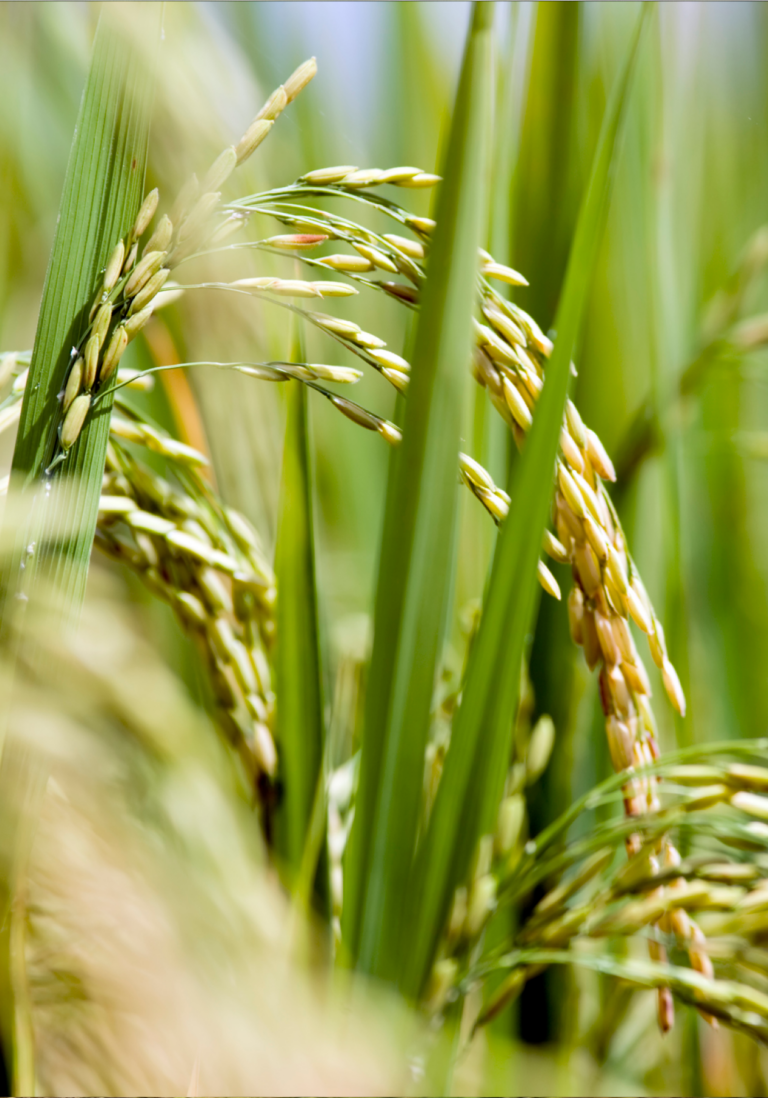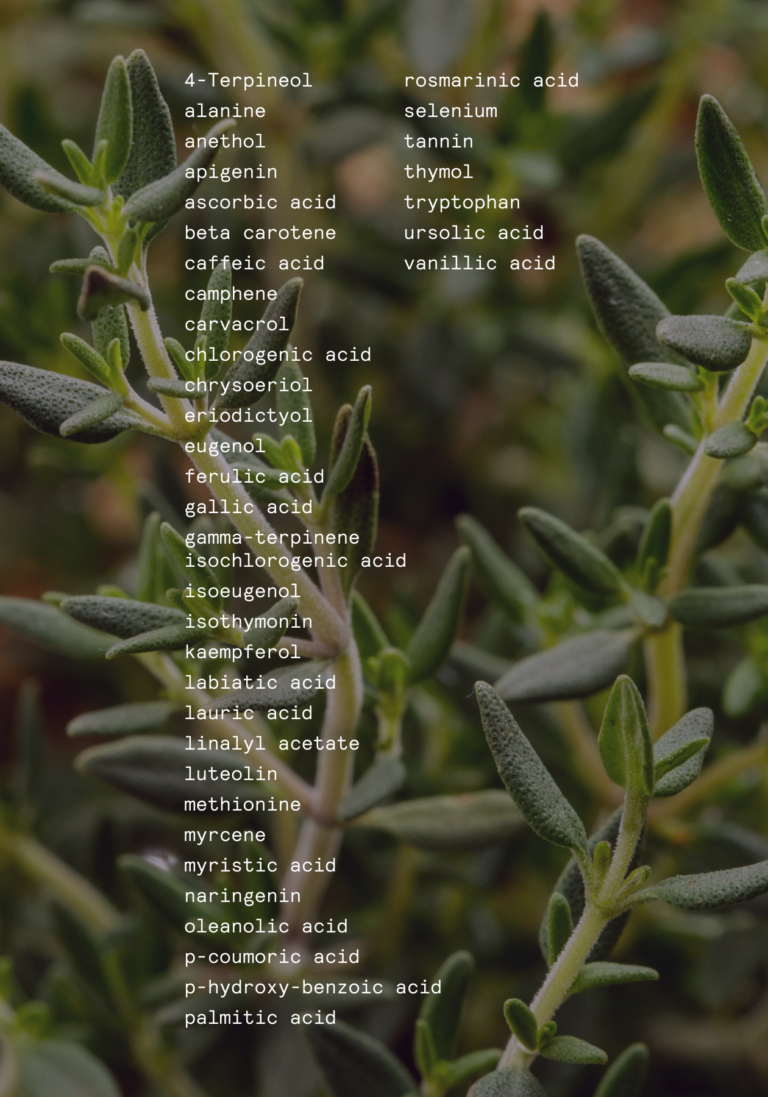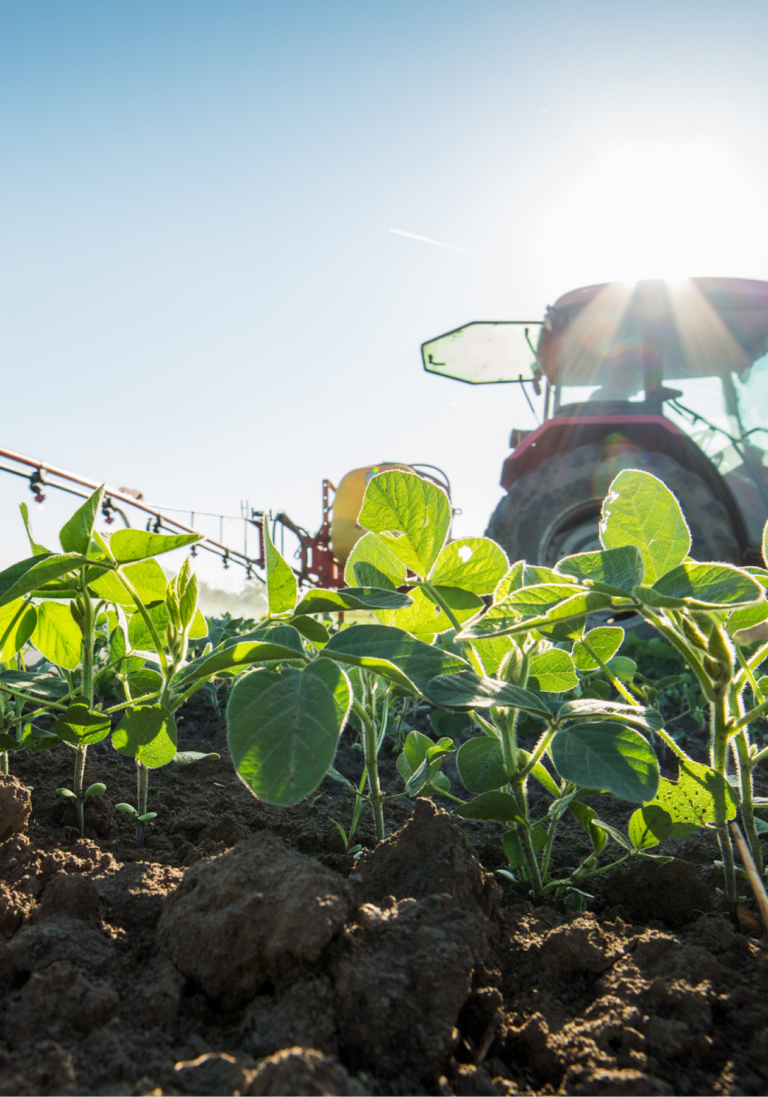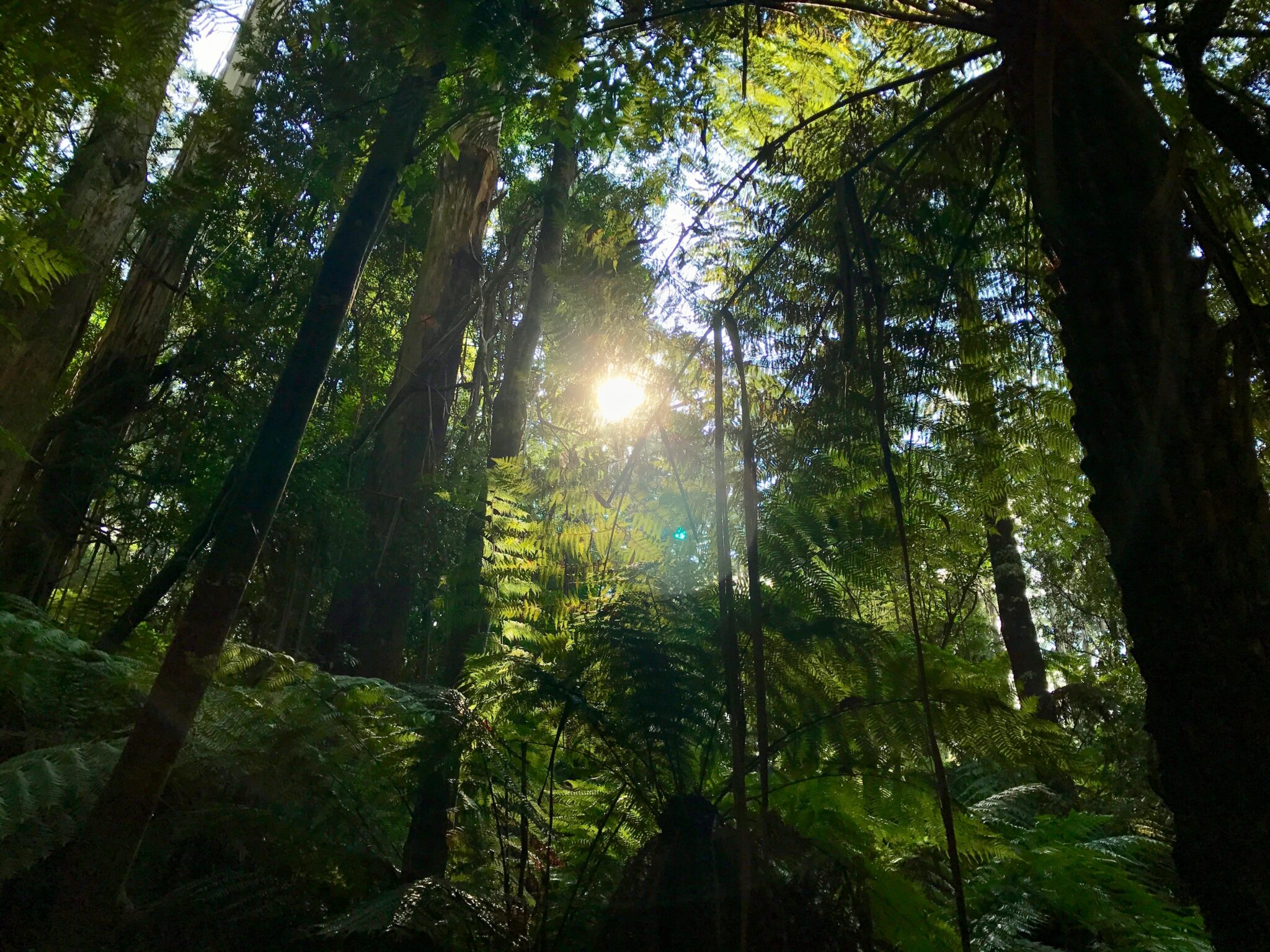Complexity

Earth’s natural systems have evolved over 4.5 billion years. What can we learn from nature’s complexity?
- Devika Bakshi
People in China were eating rice at least 11,000 years ago, making it one of the first domesticated plants and a foundation of civilization. The word for rice is the same as the word for food in many Asian languages.
Rice kernels have a hard outer layer called a hull which must be removed for rice to be edible. Inside the hull is a brown layer of bran, and inside that bran is a light-colored kernel of rice. Until the late 1800s, what people called “rice” included the bran. We now call that food “brown rice.”
The invention of new, industrial milling machines enabled the removal of both the husk and the bran, revealing a light, almost white kernel. White rice was perceived as more modern, its starchy sweetness appealed to people, and most valuable of all, without its bran, it could be stored almost indefinitely.
Shortly after the introduction of industrial milling machines, a new lethal disease called beriberi emerged in Asia. At the time, scientists assumed it must be caused by bacteria but found no culprit. They eventually discovered that beriberi was caused by the loss of a critical nutrient, Thiamin, present in the whole grain but missing from white rice. People who went back to a diet of brown rice recovered from the disease. Thiamin was eventually named vitamin B1.
Beriberi was among the first known “deficiency diseases.” The more we industrialized food production, the more it moved toward purer starches, sugars, and meat, and the fewer plants we ate. The more we abandoned our complex diets that evolved over thousands of years, the more vitamins scientists discovered.
Complexity and the limits of science
Science offers tremendous insights into the world we live in, yet there is much that science cannot explain. Our limited understanding of human health, which is incredibly complex, is a good example. Plants that grow in rich soil contain myriad minerals and chemical compounds that our bodies likely find useful. These are called “micronutrients.” Consider the antioxidants in thyme (listed at left).
Vitamins are simply a set of micronutrients that science has been able to confirm are essential, mostly because their absence caused a single, novel disease. Almost all of the others (like those in thyme) remain a mystery. In turn, science and industry assign them no value. Yet we continue to discover that complex, diverse food is truly nourishing. As more of the world has transitioned to an industrial diet stripped of its complexity, diseases, especially chronic ones in which our bodies act confused, have continued to emerge and spread.
As we have gained more power over nature, we have simplified it, distorted it, and assumed that it exists to serve us. After several decades of treating nature as a resource to be exploited, we can now clearly see the physical limits of the planet and the risks of transforming it.
People in China were eating rice at least 11,000 years ago, making it one of the first domesticated plants and a foundation of civilization. The word for rice is the same as the word for food in many Asian languages.
Rice kernels have a hard outer layer called a hull which must be removed for rice to be edible. Inside the hull is a brown layer of bran, and inside that bran is a light-colored kernel of rice. Until the late 1800s, what people called “rice” included the bran. We now call that food “brown rice.”
The invention of new, industrial milling machines enabled the removal of both the husk and the bran, revealing a light, almost white kernel. White rice was perceived as more modern, its starchy sweetness appealed to people, and most valuable of all, without its bran, it could be stored almost indefinitely.
Shortly after the introduction of industrial milling machines, a new lethal disease called beriberi emerged in Asia. At the time, scientists assumed it must be caused by bacteria but found no culprit. They eventually discovered that beriberi was caused by the loss of a critical nutrient, Thiamin, present in the whole grain but missing from white rice. People who went back to a diet of brown rice recovered from the disease. Thiamin was eventually named vitamin B1.
Beriberi was among the first known “deficiency diseases.” The more we industrialized food production, the more it moved toward purer starches, sugars, and meat, and the fewer plants we ate. The more we abandoned our complex diets that evolved over thousands of years, the more vitamins scientists discovered.
Complexity and the limits of science
Science offers tremendous insights into the world we live in, yet there is much that science cannot explain. Our limited understanding of human health, which is incredibly complex, is a good example. Plants that grow in rich soil contain myriad minerals and chemical compounds that our bodies likely find useful. These are called “micronutrients.” Consider the antioxidants in thyme (listed at left).
Vitamins are simply a set of micronutrients that science has been able to confirm are essential, mostly because their absence caused a single, novel disease. Almost all of the others (like those in thyme) remain a mystery. In turn, science and industry assign them no value. Yet we continue to discover that complex, diverse food is truly nourishing. As more of the world has transitioned to an industrial diet stripped of its complexity, diseases, especially chronic ones in which our bodies act confused, have continued to emerge and spread.
As we have gained more power over nature, we have simplified it, distorted it, and assumed that it exists to serve us. After several decades of treating nature as a resource to be exploited, we can now clearly see the physical limits of the planet and the risks of transforming it.
Domestication vs. domination
Until agriculture was industrialized, people learned to live on and with the land. They observed the patterns and discerned the principles that guided life and led to health.
For example, farmers around the world grew beans and legumes alongside grains, and cooks served beans with grains at meals. In recent decades, science has explained why this pair was so beneficial. Bean and legume plants pull nitrogen out of the atmosphere and into the soil, where grains extract it for their growth. Both beans and grains contain only some essential amino acids that the human body needs, but when eaten together, they create a complete protein. In this case, science has validated what hundreds of millions of people had learned through cultures of farming, cooking, and eating.
In 1700, there were about 600 million people on Earth, and about 10% of arable land had been transformed from forest or grassland into farmland, with the largest changes in Europe and China. By the early 1800s, almost all of the forests in the United States were cut down to fuel steam-engine-powered industrialization. Beginning in the late 1800s, the human relationship with land began to change rapidly. Powered by human ingenuity and fossil fuels, industrialization gave people with machines the capacity to generate and control vast amounts of energy and land. As machines did the work, people left farms. In turn, farms grew crops that suited machines, and agriculture became agribusiness.
With more control over nature, human populations boomed: 2 billion in 1928, 3 billion in 1960, 5 billion in 1987, and 8 billion in 2023. Along the way, forests, especially in tropical countries, have been cleared to create more farmland, particularly for beef.
Industrial farming’s guiding principles are modern: scale, speed, and standardization. It simplifies the land into a surface for growing a narrow range of crops on fields that are fertilized with fossil-fuel-derived chemicals, covered in pesticides, and plowed annually by enormous machines. This system has, thus far, increased the number of calories produced, but it has simplified and degraded the land. Unlike traditional farming practices that mix livestock and diverse crops with trees and forests, industrial farming leaves the soil exposed and shelters no wildlife. Where once farms turned decay into health and death into life, industrial agriculture and land use produces waste at nearly every step and is now responsible for at least 20% of carbon emissions into the atmosphere.
Domestication vs. domination
Until agriculture was industrialized, people learned to live on and with the land. They observed the patterns and discerned the principles that guided life and led to health.
For example, farmers around the world grew beans and legumes alongside grains, and cooks served beans with grains at meals. In recent decades, science has explained why this pair was so beneficial. Bean and legume plants pull nitrogen out of the atmosphere and into the soil, where grains extract it for their growth. Both beans and grains contain only some essential amino acids that the human body needs, but when eaten together, they create a complete protein. In this case, science has validated what hundreds of millions of people had learned through cultures of farming, cooking, and eating.
In 1700, there were about 600 million people on Earth, and about 10% of arable land had been transformed from forest or grassland into farmland, with the largest changes in Europe and China. By the early 1800s, almost all of the forests in the United States were cut down to fuel steam-engine-powered industrialization. Beginning in the late 1800s, the human relationship with land began to change rapidly. Powered by human ingenuity and fossil fuels, industrialization gave people with machines the capacity to generate and control vast amounts of energy and land. As machines did the work, people left farms. In turn, farms grew crops that suited machines, and agriculture became agribusiness.
With more control over nature, human populations boomed: 2 billion in 1928, 3 billion in 1960, 5 billion in 1987, and 8 billion in 2023. Along the way, forests, especially in tropical countries, have been cleared to create more farmland, particularly for beef.
Industrial farming’s guiding principles are modern: scale, speed, and standardization. It simplifies the land into a surface for growing a narrow range of crops on fields that are fertilized with fossil-fuel-derived chemicals, covered in pesticides, and plowed annually by enormous machines. This system has, thus far, increased the number of calories produced, but it has simplified and degraded the land. Unlike traditional farming practices that mix livestock and diverse crops with trees and forests, industrial farming leaves the soil exposed and shelters no wildlife. Where once farms turned decay into health and death into life, industrial agriculture and land use produces waste at nearly every step and is now responsible for at least 20% of carbon emissions into the atmosphere.
Global land use for food production today
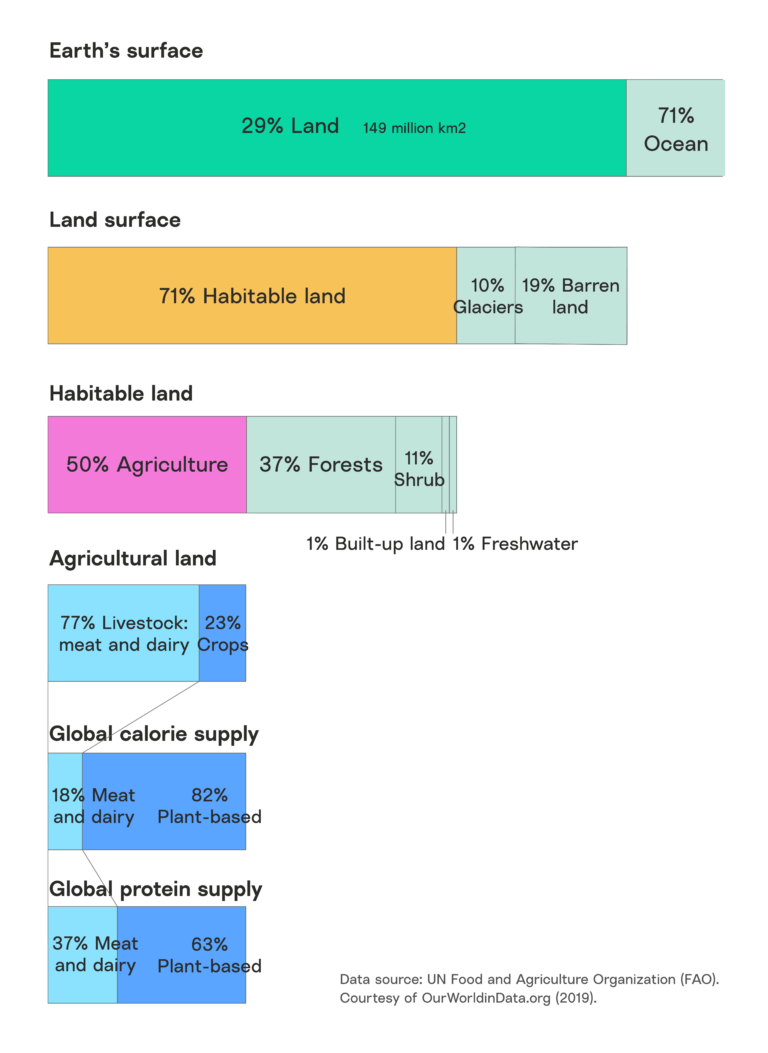
Undoing nature’s complexity
It took an estimated 90 metric tons of living organic matter and tens of millions of years to create 4 liters (1 gallon) of petroleum. The average automobile returns that complex, ancient carbon to atmospheric CO2 in a matter of minutes.
One heat wave can melt millennia of ice, sending rivers of water into the sea or thawing layers of frozen ground, creating cracks and holes in the earth’s surface and releasing carbon that had been taken out of the atmosphere many centuries ago.
A large tree in an old forest captures carbon in its leaves, branches, trunk, and roots every year while securing and enriching the soil, sheltering undergrowth and animals, and cooperating with the trees around it. It can be felled in a matter of minutes, and the stored carbon cannot be replicated by planting a field of saplings.
Farmers who nurture their soil through mixing crops, practicing diverse farming methods, and raising animals and plants together to turn waste into nutrients can enrich the soil they work. Annual tilling of monoculture fields tears up the soil and exposes it to rain and wind, allowing decades of growth to blow or wash away in a single storm.
Our growing population size and the warming atmosphere will not allow us simply to return to historical patterns of farming and land management. Fortunately, we already have much of the wisdom necessary to cultivate and restore complex, diverse, healthy ecosystems. Such systems—whether in the ground or in our bodies—are more resilient and adaptable, valuable traits as the climate changes.
The following pages explore and explain the complex relationships that create and sustain ecosystems, the ways humans have altered them, and the specific challenges posed by drought and aridification. Maps of climate zones show how local climates transition as the atmosphere warms. Maps of dryness illuminate areas that face new and potential threats.
Undoing nature’s complexity
It took an estimated 90 metric tons of living organic matter and tens of millions of years to create 4 liters (1 gallon) of petroleum. The average automobile returns that complex, ancient carbon to atmospheric CO2 in a matter of minutes.
One heat wave can melt millennia of ice, sending rivers of water into the sea or thawing layers of frozen ground, creating cracks and holes in the earth’s surface and releasing carbon that had been taken out of the atmosphere many centuries ago.
A large tree in an old forest captures carbon in its leaves, branches, trunk, and roots every year while securing and enriching the soil, sheltering undergrowth and animals, and cooperating with the trees around it. It can be felled in a matter of minutes, and the stored carbon cannot be replicated by planting a field of saplings.
Farmers who nurture their soil through mixing crops, practicing diverse farming methods, and raising animals and plants together to turn waste into nutrients can enrich the soil they work. Annual tilling of monoculture fields tears up the soil and exposes it to rain and wind, allowing decades of growth to blow or wash away in a single storm.
Our growing population size and the warming atmosphere will not allow us simply to return to historical patterns of farming and land management. Fortunately, we already have much of the wisdom necessary to cultivate and restore complex, diverse, healthy ecosystems. Such systems—whether in the ground or in our bodies—are more resilient and adaptable, valuable traits as the climate changes.
The following pages explore and explain the complex relationships that create and sustain ecosystems, the ways humans have altered them, and the specific challenges posed by drought and aridification. Maps of climate zones show how local climates transition as the atmosphere warms. Maps of dryness illuminate areas that face new and potential threats.
